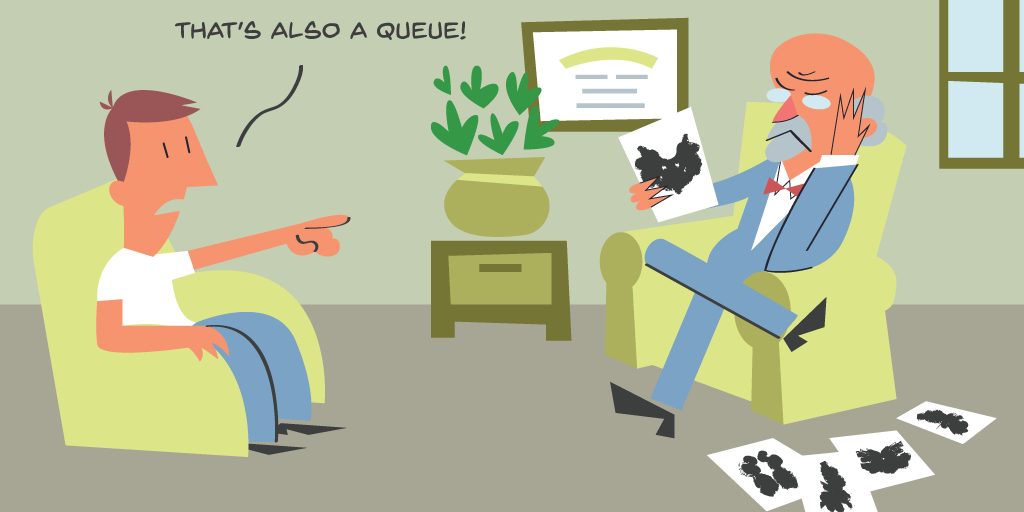Customer service isn’t so much a choice as it is a necessity for a company operating in the 21st century.
While companies routinely differentiate themselves based on claims of superior customer service, it’s getting more and more difficult to actually follow through on such promises.
The reasons behind this aren’t surprising.
Given the ubiquity of reviews, comparison website, and consumer forums, people no longer make buying decision in isolation — be it the latest iPhone or a pair of Yeezy sneakers.
The truly visionary companies are those that capitalize on this opportunity.
By amplifying the social dimension of their product’s experience, Apple gets people to take leave from work and queue up for days just to be the first to get their hands on a new product.
Unfortunately, your company is not Apple — at least not yet. This means that while the general principles of customer service remain the same, you operate in a different retail paradigm.
A Thin Line Between the Good and Bad Customer Service
The difference between the good and bad customer experience can be paper-thin. The most successful brands are those who know how to ride this line.
Before we get to that, what is the impact of poor customer service, exactly?
Any effort to quantify that depends entirely on the context in which your retail business operates. Here are a few figures that should definitely ring alarm bells for any business owner.
The 2011 RightNow Customer Experience Impact Report suggests that 89% of consumers stop doing business with a company due to poor customer service. For more customer service impact data, you can explore additional research that highlights just how costly a single negative interaction can be.
In other words, you can be one bad customer service experience away from losing your customer forever.
If the effects of poor customer service are so catastrophic, it’s worth spending a bit of time exploring the precise ways in which retail businesses let their customers down.
Long Queues and Wait Times — a Sure Way to Bad Customer Service

Queues are an everyday reality for retail businesses. For an outsider, it might seem like a good problem to have — you have so many customers that they have to wait in line!
While a store with a long queue is definitely a better scenario than an empty one, that isn’t the full picture. More often than not, queues are inefficient, mismanaged, and chaotic.
In other words, they are the perfect recipe for your business to become one of the poor customer service examples.
Do your customers really have to wait as long as they do? If not, what is the path to optimizing retail queues?
The effects of poor customer service are manifold.
On average, 59% of retail customers are not prepared to wait in a queue. In the UK alone, businesses lose 21 million customers a year due to poor customer service caused by long lines.
Times have changed, and it’s not enough to tweak your product to attract more visitors. In the battle with improving bad customer service, experience is what makes or breaks businesses.
The one solution that stands out, both for its simplicity and effectiveness, is a retail queuing system.
Many businesses are already studying the mechanics of a queue management system — why shouldn’t yours?
Reducing the need for management serves the dual purpose of:
Narrowing down the scope of human error.
Eliminating redundant staff.
Administrative staff have the herculean task of ensuring smooth operations. This includes answering questions, troubleshooting technical glitches, assisting in billing and check outs, and much more.
Frankly, it’s unfair to expect empathy from the overburdened staff that’s already occupied with so much real-time decision making.
Instead, by implementing a technology-assisted line management system, an enormous amount of staff bandwidth is freed up. That free time can be used for engaging customers and improving upon bad customer experience.
Additionally, the availability of clear information through TV displays further reduces perceived wait time. The more personal your customer experience gets, the stronger your bond with your customers will be.
The Flip Side of Word-of-Mouth Marketing

Positive word-of-mouth marketing reflects that the company is doing something right. They’ve built a product, service or brand so good that it markets itself.
Indeed, WOM is a massive differentiating factor for smaller businesses, giving them a shot at challenging giant corporations with deep pockets.
The flip side to this rosy story is that people are far more eager to share bad experiences than good ones.
2012 Global Customer Service Barometer suggests that news of bad customer service reaches more than twice as many ears as praise for a good service experience.
Additionally, the customer relationship management platform Zendesk says that 54% of customers share a bad experience with more than 5 people.
Lying to yourself and ignoring your customer service problem won’t solve anything. The word will eventually get out, making your brand lose every last bit of credibility.
Instead, there should be no reason for customers to complain about poor service in the first place. And then, you’ll be in a position to reap the benefits of the word-of-mouth marketing.
The Impact of Social Media on the Perception of Customer Service
In the digital age, the effects of word-of-mouth marketing can increase exponentially because of social media.
If a company fails to resolve a problem swiftly, consumers don’t hesitate to go to the company’s Facebook page and demand an apology.
If the company in question provides bad customer service experience, such a complaint can have a domino effect, resulting in an avalanche of bad press overnight.
Most consumers today make buying decisions online, and so a bad review can lead thousands of dollars in lost revenue. Sometimes the veil of anonymity can make people act harsher than usual.
As Jon Ronson puts it in his book So You Have Been Publicly Shamed:
“I suppose that when shamings are delivered like remotely administered drone strikes nobody needs to think about how ferocious our collective power might be.”
Often, such public executions are not fair to businesses. But regardless of whether you like the status quo or not, the social side of marketing is not something you can change.
The reality is, online reviews is how people make choices nowadays.
You can either be the sort of company that adapts itself to this new paradigm, or resist the change and lose your customers as a result.
Good Customer Service for the Win

The impact of poor customer service is not to be ignored. You have to stop taking your customers for blind consumers, as they can tell the difference between the good and bad customer service.
If your focus is on delivering amazing customer experience in the first place, then your business won’t have to worry about PR so much.
Loyal customers are just as quick to stick up for the brand they believe in.
As a closing statement, instead of quoting the same consumer surveys, let’s go with common sense and age-old biblical wisdom instead.
Sure, a quick search through the Bible won’t find you any mentions of “the impact of poor customer service”. But there is a valuable piece of advice offered by the Scripture, that is applicable to both life and retail:
"Do unto others as you would have them do unto you".
If this pearl wisdom is something your business can relate to, consider getting a free 14-day access to Qminder.
It is the perfect tool to transform your company into a "good Samaritan" kind of business.






